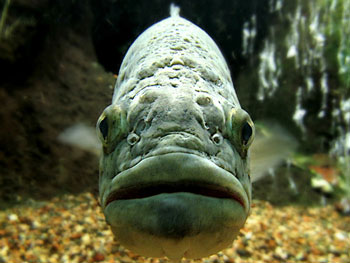Fish Recipes: Baked Cod with Chorizo and White Beans
December 13, 2011Striped Bass Facts
January 15, 2012Question: How many fish die unnecessarily each year because they are victims of rough handling and poor release techniques? Research has suggested that the mortality rates of certain species of released fish may be unpalatably high. Why? Because anglers with good intentions don’t always know what they are doing, and as long as the fish swims off, it’s assumed it will live to be caught again some other day.
Catch and release fishing has made tremendous gains in popularity in the past two decades due to regulations like minimum size limits, maximum creel limits, and changes to fish and game laws enacted for environmental reasons. For a few species, catch and release is mandated. In some cases, anglers practice catch and release techniques because they’ve caught enough for supper but want to stay out on the water for a few more hours. Some people even love the act of fishing, but don’t particularly like the taste of fish!
No matter why you’re choosing to engage in catch and release fishing, we’d like to share a few tried and true catch and release fish techniques that will ensure that the fish that swim away from your boat actually do keep on swimming.
1. Treat your fish gently. Don’t squeeze them or try to remove the hook by ripping it out.
2. Don’t put your catch on the ground where it will thrash around and could potentially injure itself.
3. Never put your fingers into the gills of a fish. Sure, it makes for a cool photo, but it’s no fun (and can be deadly) for the fish.
4. When fish swallow the hook, just cut the line. Ingesting a fish hook typically does far less internal damage than a well-meaning angler attempting to yank it out.
5. Minimalize air exposure and make sure you wet your hands before touching your fish.
6. Better yet, do what you can to avoid touching the fish. Leave the fish in the water while you remove the hook, if at all possible.
7. Use soft landing nets without knotted mesh, which can damage a fish’s scales and eyes.
8. Always use the right rig for the fish species you’re catching and releasing. This will make it easier to remove hooks without causing the fish’s early demise. There are even specially made hooks for catch and release fishing.
9. Never toss a fish back into the water – instead, release it gently.
BONUS CATCH AND RELEASE TIP: If your fish is plain exhausted from a long fight, it may enter into what is essentially a state of consciousness. It may simply float in the water, belly up. Release a fish in this state, and you’re almost guaranteed that your good intentions will be for naught. Instead of just putting it back into the water and hoping for the best, do a little fishie CPR. Place your fish into the water, supporting its midsection, and move it back and forth gently until it begins to move on its own. Only then should you release it.

